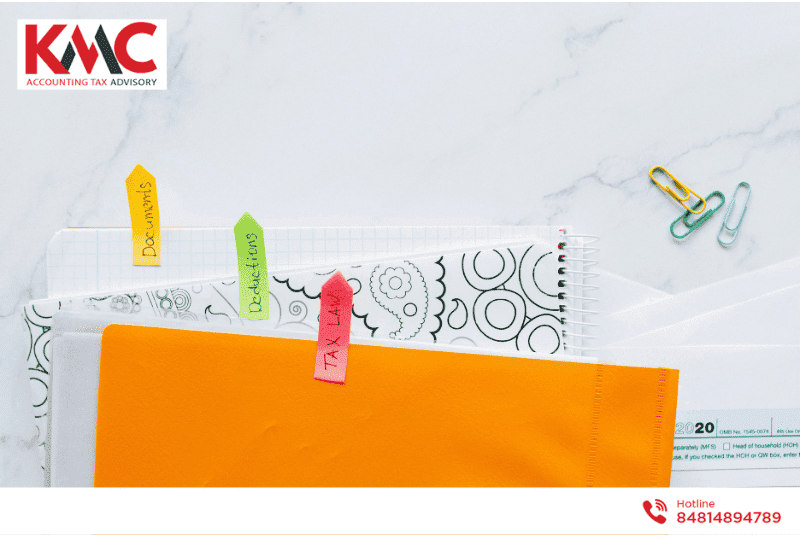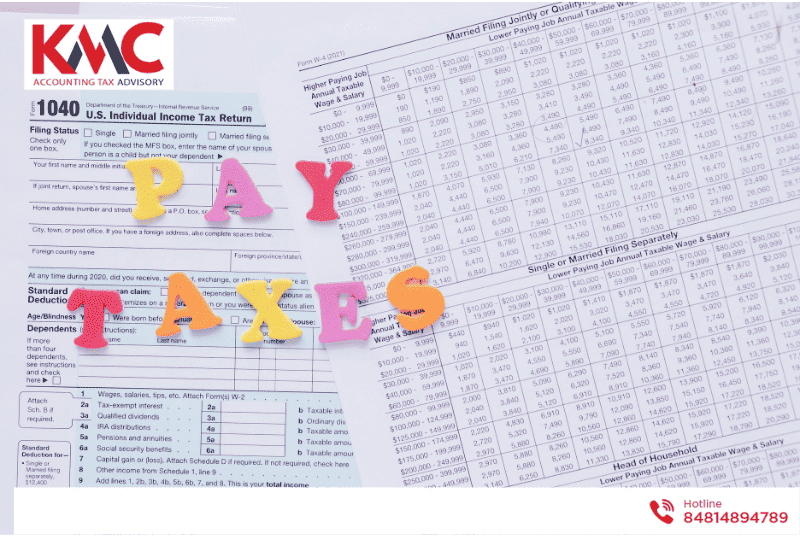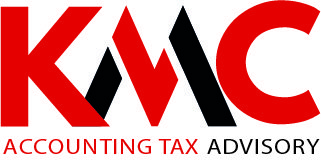Establishing and maintaining an accurate and transparent accounting bookkeeping system is not only a legal obligation but also the key to understanding your company’s financial health and making informed business decisions. This is especially crucial for foreign-invested enterprises (FDI), which must comply with both Vietnamese accounting regulations and requirements from the parent company abroad.
Let KMC guide you through what an accounting bookkeeping system is, its structure, and how to choose the most appropriate format for your enterprise.
What Is an Accounting Bookkeeping System?

An accounting bookkeeping system serves as the enterprise’s “financial journal,” where all economic and financial transactions are recorded, organized, and stored.
According to the Accounting Law No. 88/2015/QH13, accounting books must clearly specify:
- Name of the accounting entity
- Title of the book, date of opening and closing
- Signatures of the book preparer, chief accountant, and legal representative
- Number of pages and company seal across the pages
Accounting books consist of general ledgers and subsidiary ledgers, which are regulated under:
- Circular No. 133/2016/TT-BTC (applicable to small and medium-sized enterprises)
- Circular No. 200/2014/TT-BTC (applicable to all types of enterprises – optional)
Structure of a Complete Accounting Bookkeeping System
A complete accounting bookkeeping system typically includes two main groups:
General Ledgers

The General Journal records all economic and financial transactions in chronological order. It generally includes:
- Date of entry
- Document number and date
- Summary of the transaction
- Debit and credit amounts according to journal entries
- Reference to the related General Ledger
- Subtotal and cumulative total at the end of each page, carried forward to the next page
The General Ledger tracks each account in detail and includes:
- Date of entry
- Document number and date
- Summary of transaction
- Page reference from the General Journal
- Corresponding (offsetting) account
- Debit and credit amounts
- Opening balance, movements during the period, and closing balance
Subsidiary Ledgers

Subsidiary ledgers provide detailed tracking of specific items such as receivables, payables, inventories, fixed assets, and depreciation. Their basic structure includes:
- Date of entry
- Description of the transaction
- Corresponding account
- Amount
The main purpose of subsidiary ledgers is to monitor accounts receivable and payable and inventory management, which is especially valuable for large-scale FDI enterprises requiring detailed and transparent accounting records.
How to Choose the Most Suitable Bookkeeping Method
Depending on the enterprise’s scale, transaction volume, industry, and accounting capability, you may choose one of the following bookkeeping methods: General Journal, Journal–Ledger, or Voucher Journal.
Below is a detailed comparison table:
| Bookkeeping Method | Characteristics / Advantages | Best Suited For |
| General Journal | – Records transactions in chronological order, providing an overall view of business activities. – Easy to use, suitable for enterprises with a basic accounting team. – Can be combined with the General Ledger for data aggregation. | – Small and medium-sized enterprises (SMEs) with a moderate number of transactions. – Simple business sectors such as retail or services. – Entry-level or less experienced accountants. |
| Journal–Ledger | – Combines chronological recording with classification by accounting subjects. – Saves time and reduces steps compared to the General Journal method. – Suitable for enterprises with complex chart of accounts. | – SMEs with a medium volume of transactions. – Diverse industries requiring detailed monitoring such as manufacturing or construction. – Accountants with intermediate experience. |
| Voucher Journal | – Records transactions directly from source documents, flexible for large-scale operations. – Suitable for enterprises with complex accounting systems. – Allows detailed tracking of each transaction. | – Large enterprises or FDI companies with multiple international transactions. – Complex sectors such as healthcare or installation services. – Professional and highly experienced accounting teams |
KMC – End-to-End Solutions for Maintaining an Accurate Accounting Bookkeeping System for FDI Enterprises
Foreign-invested enterprises (FDI) often engage in numerous international transactions, making their accounting bookkeeping systems increasingly complex.
If you need professional support, KMC offers comprehensive monthly bookkeeping services—from A to Z. Our services include:
- Recording and monitoring all business transactions
- Preparing detailed financial statements
- Ensuring timely tax filing and full legal compliance
- Advising on process optimization for accounting efficiency
In essence, an accounting bookkeeping system serves as the “financial journal” of the company. However, maintaining it accurately is far from simple—especially for large-scale FDI enterprises with complex operations.
If your business needs assistance, contact KMC, a professional outsourced accounting service provider. Our team of experts will help you manage all accounting matters efficiently, allowing you to focus confidently on your core business operations.
Contact us today at +84 81 489 4789 or +84 91 988 9331 for professional consultation and support.

